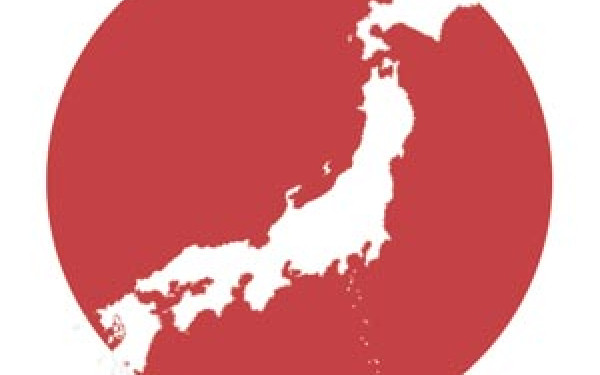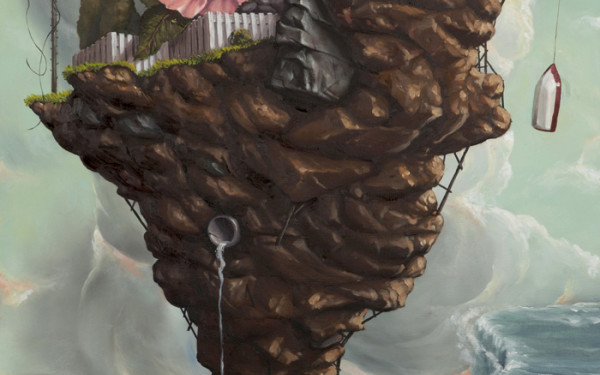The Arab Winter Is Coming
Six Local Artists Bring Middle East Streets to Montreal
The historic La Patrie building, formerly owned by the Church of Scientology and currently housing the Under Pressure Fresh Paint Gallery, will be undergoing yet another transformation this week.
The gallery, at the corner of Ste. Catherine St. E. and Hotel de Ville Ave., is being taken over by The Arab Winter for the month of December, an exhibition/experience that promises to bring the streets of the Arab world to Montreal in a way that’s never been done before.
“You are invited to a world where your freedom is in question, your countries are in limbo, your identity is in flux, and your dreams are put on ice,” said Yassin Alsalman in the press release. Salman, more commonly known as The Narcicyst, an Iraqi-Canadian rapper, author, and artist who calls Montreal his home, is one of the six responsible for The Arab Winter.
The project plans to recreate a “post-revolution” Arab street, fusing Arab-inspired graffiti and calligraphy from Tunisians eL Seed and Karim Jabbari respectively, while mixed-media masterpieces and visceral photography from Iraqi sisters Sundus and Tamara Abdul Hadi stand back-to-back with nostalgic video installations by their mother, Sawsan Al Saraf.
The whole experience is musically curated and overseen by The Narcicyst, as he provides the soundtrack accompanied by a group of hand-selected musicians that will guide you through the Arab streets on “the first day after the storm.”
At a time when the Arab world is in the global spotlight more than ever, and as we witness the so-called Arab Spring flourish and wilt simultaneously before our eyes, a project like this holds significant weight.
“Obviously the Arab Spring is on everybody’s mind,” says Sundus, whose Flight series focuses primarily on the imagination of youth throughout the revolution. “I think I speak for all of us when I say that our work really tries to deal with the current issues that are happening in our homelands.”
The exhibition not only deals with what is happening in the Middle East from an Arabic perspective, but it also strives to confront and question the way it is viewed in North America.
“Many people have thought that when we say The Arab Winter [it’s meant as] a pessimistic view on the Arab Spring—in some ways it is, and in some ways it isn’t,” said Sundus. “We’re trying first to move away from the commoditization of a revolution; and we’re moving away from getting stuck in time.”
“Many people have thought that when we say The Arab Winter [it’s meant as] a pessimistic view on the Arab Spring—in some ways it is, and in some ways it isn’t,” said Sundus. “We’re trying first to move away from the commoditization of a revolution; and we’re moving away from getting stuck in time.”
The concept of the changing seasons is both literal and symbolic of a new era for this revolution, and of a time when change and progress have become absolutely necessary for its survival.
“The Arab Spring happened, but we’ve got to move with the times,” says Sundus. “Seasons do change, and we have to move past that initial phase and start thinking about consequences, and start thinking about the future.”
She added, “As inspiring as it is, we know that there is still so much to be done, and there are so many stories to be told within these uprisings.”
However, every member makes it clear that the exhibit is in no way a platform to spout off opinion; it is in fact quite the opposite.
“We are not here bringing answers, we are here asking questions,” said eL Seed. “Also, we want to create discussion around the concept of revolution; what does it mean, and how does a revolution really exist?”
In many ways The Arab Winter functions as an interactive exhibition that is focused around education and story telling. “We are artists; we are cultural producers,” says Sundus. “We are not politicians, and we are not political analysts either.”
“If anything, [the show] is a point of reference, and a chance for people to question, and to come in and contemplate the events that are happening from a human perspective, from a cultural, and historical perspective – we are not trying to make any statements about politics.”
Though Dec. 2 is the main event and opening night, the show will be occupying the Fresh Paint Gallery until Dec. 24, and the six artists plan to keep the space alive, interactive, and engaging.
“We really want to include a community element into the following three weeks,” says Sundus. The group is considering hosting workshops in light-graffiti, calligraphy, photography, and more, and the idea of a panel discussion is in the air.
“We want to make people realize that we aren’t that far away from the events going on in the rest of the world,” said Sundus. “We want to give people a sense of unity in a way, and sense of understanding.”
The exhibit has become much more than the gallery it inhabits for these artists, and for the Arab and non-Arab community alike. An installation like this becomes a platform for discussion, and the hopes for the future are high.
“We definitely want this project to travel,” says Sundus. “Hopefully The Arab Winter can go on and freeze other cities.”
The Arab Winter / Dec. 2 to Dec. 24 / Under Pressure Fresh Paint Gallery (180 Ste. Catherine St. E.)

_900_562_90.jpg)
_900_675_90.jpg)
_600_832_s.png)



